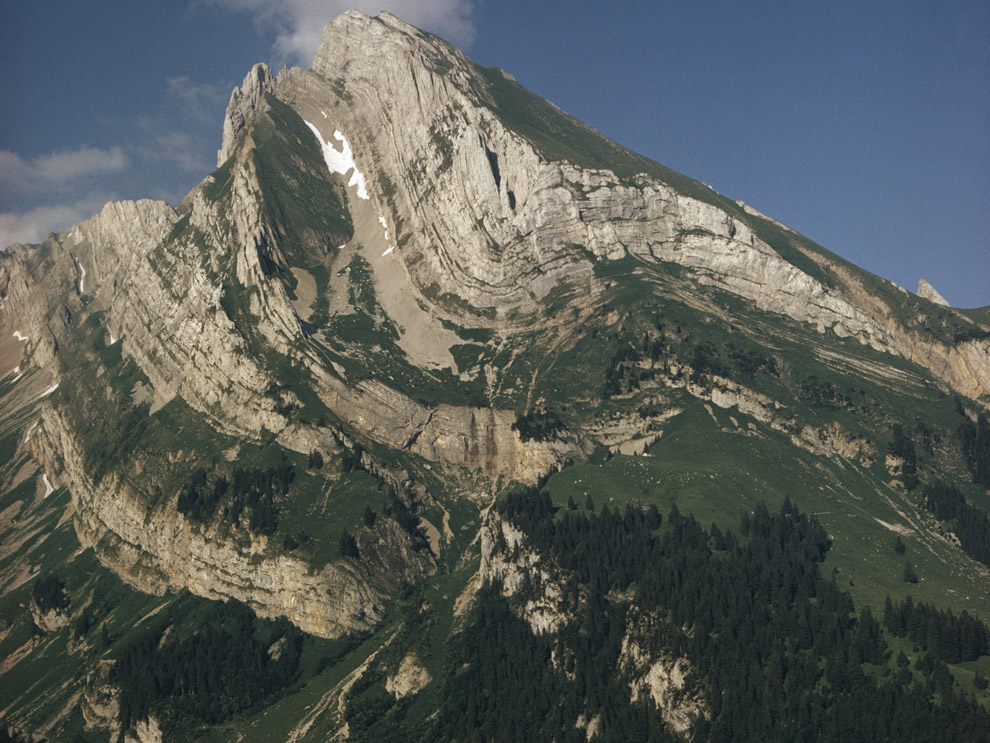Fold Mountains
- Get link
- X
- Other Apps
Fold mountains are one of the most prominent and widespread types of mountains on Earth. They are characterized by their elongated ridges and valleys, which form through the folding of rock layers due to tectonic forces. These majestic landforms offer stunning landscapes and have played a significant role in shaping the Earth's surface. In this article, we will delve into the formation, characteristics, and examples of fold mountains.
Formation of Fold Mountains:
The formation of fold mountains is closely tied to plate tectonics, which describes the movement and interaction of the Earth's lithospheric plates. Fold mountains primarily form in convergent plate boundaries where two continental plates collide. As the plates come together, immense compressional forces act on the rock layers between them.
Initially, sediments accumulate in large basins between the converging plates. Over time, the weight of the sediments, combined with the horizontal compression, causes the layers of rocks to buckle and fold. These folds can be broad or narrow, gentle or tight, depending on the intensity of the compressional forces and the nature of the rocks involved.
The folding process can take millions of years and results in the uplift of the folded rocks, creating elongated mountain ranges. The height and steepness of the mountains depend on factors such as the thickness and resistance of the rock layers involved, as well as the duration and intensity of tectonic forces.
Characteristics of Fold Mountains:
Fold mountains exhibit several characteristic features that distinguish them from other types of mountains. Here are some key characteristics:
1. Folded Structure: The primary characteristic of fold mountains is the folded structure of the rock layers. These folds can take the form of anticlines, which are upward arches, or synclines, which are downward troughs. The repetition of these folds creates a series of ridges and valleys along the length of the mountain range.
2. Linear Orientation: Fold mountains often have a linear or curving orientation, extending for hundreds or thousands of kilometers. This linear arrangement is a result of the long, continuous compressional forces acting on the rocks during their formation.
3. Varied Elevation and Steepness: The elevation and steepness of fold mountains vary depending on factors such as the intensity of tectonic forces, erosion, and the types of rocks involved. Some fold mountains have towering peaks and steep slopes, while others have more gentle and rolling topography.
4. Parallel Mountain Ranges: Fold mountains can occur as single ranges or as multiple parallel ranges. These parallel ranges are formed due to the repetition of folding and uplift along the same tectonic boundary.
5. Folded and Thrusted Structures: In addition to folding, fold mountains can exhibit thrust faults. These faults occur when the compressional forces are so intense that one block of rocks is pushed horizontally over another block. This thrusting creates complex geological structures, with older rocks sometimes found on top of younger rocks.
Examples of Fold Mountains:
Fold mountains can be found on every continent and have shaped many iconic landscapes. Here are a few notable examples:
1. The Himalayas: The Himalayas, located in Asia, are the highest and most iconic fold mountain range on Earth. Formed by the collision of the Indian and Eurasian plates, the Himalayas feature towering peaks, including Mount Everest, the world's highest mountain.
2. The Alps: The Alps, situated in Europe, stretch across several countries, including France, Switzerland, Italy, and Austria. These fold mountains are renowned for their breathtaking beauty, picturesque valleys, and world-class skiing destinations.
3. The Andes: The Andes, located in South America, are the longest continental mountain range in the world. They run parallel to the western coast of the continent, spanning several countries, including Chile, Argentina, Peru, and Ecuador.
The Andes offer diverse landscapes, including towering peaks, high plateaus, and deep valleys.
4. The Appalachian Mountains: The Appalachian Mountains extend along the eastern coast of North America, from Canada to the United States. They are one of the oldest mountain ranges in the world and showcase gentle slopes, forested valleys, and scenic beauty.
5. The Zagros Mountains: The Zagros Mountains, situated in Iran and Iraq, are a prime example of fold mountains formed by the collision between the Arabian and Eurasian plates. They feature rugged peaks, deep canyons, and are renowned for their rich geological and cultural heritage.
These are just a few examples of the diverse fold mountains found worldwide. Each mountain range has its unique characteristics, geological history, and cultural significance.
Fold mountains are not only stunning natural wonders but also provide valuable resources, such as minerals, water, and fertile soil. They also shape regional climates, influence ecosystems, and provide habitats for a wide variety of plant and animal species.
In conclusion, fold mountains are a testament to the dynamic nature of our planet and the powerful forces that shape its surface. Their formation through tectonic plate collisions and the subsequent folding of rock layers create some of the most awe-inspiring landscapes on Earth. Whether it's the towering peaks of the Himalayas or the picturesque valleys of the Alps, fold mountains continue to captivate our imagination and remind us of the incredible geological processes that have shaped our world.
- Get link
- X
- Other Apps

Comments
Post a Comment